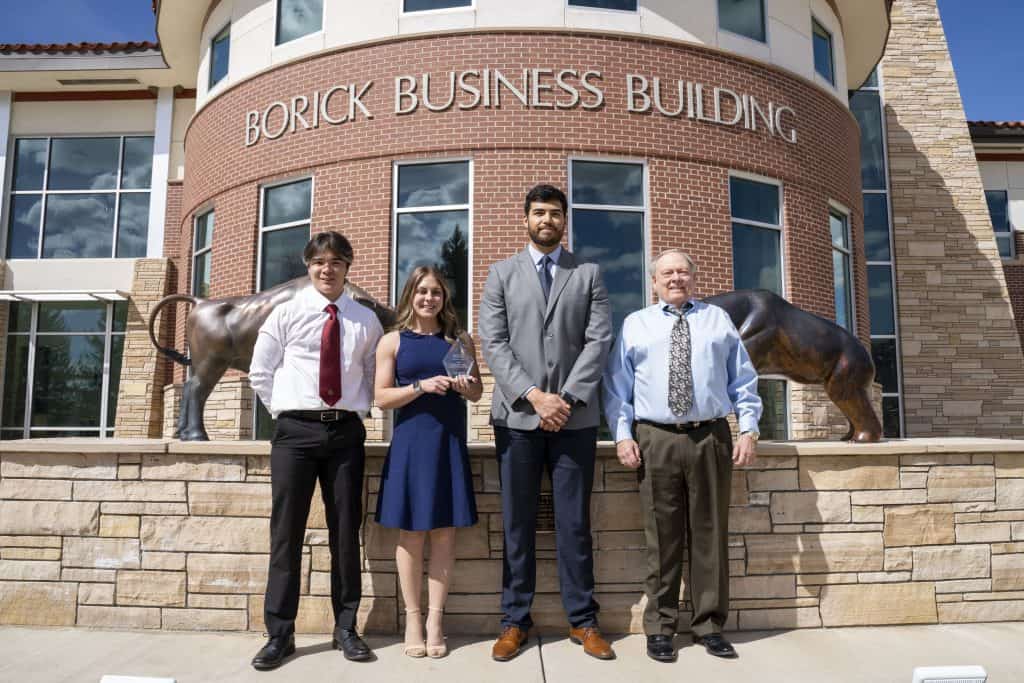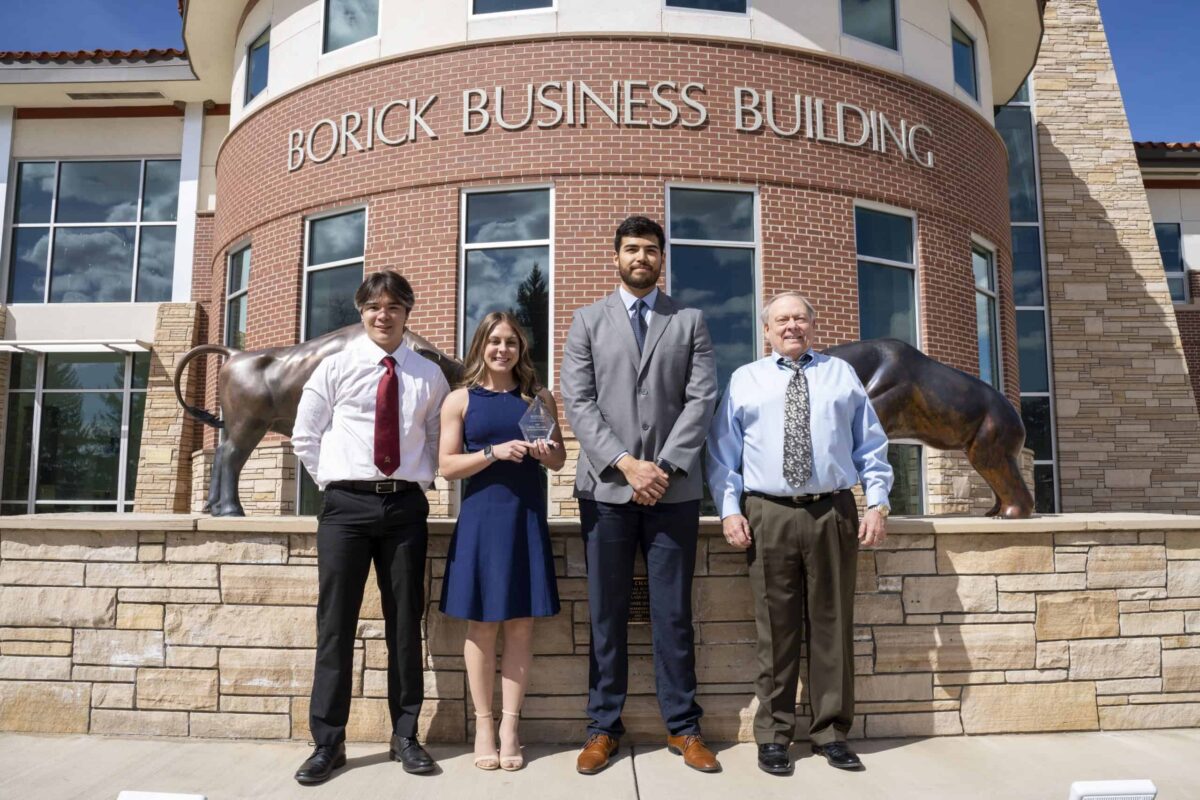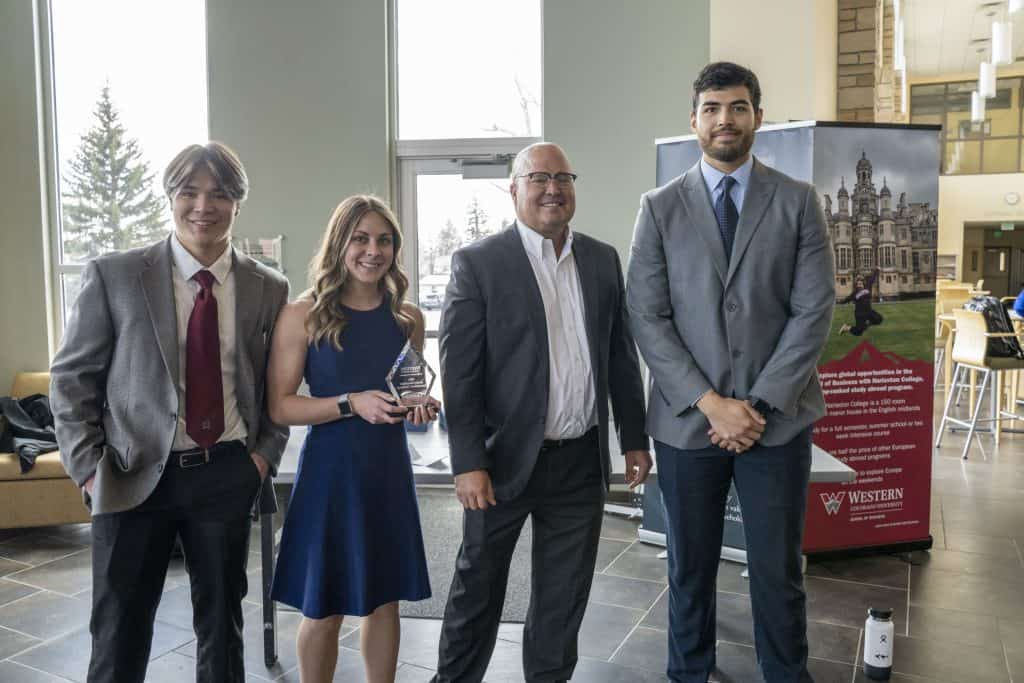
Lisa Miller, Andres Almeida, and Matthew Tamanaha comprised the winning team of Mountaineers at the Rocky Mountain Investment Challenge, held Saturday, April 2 in Borick Hall. The competition’s venue, and the funders for the prize money, rotate annually.
Seven other teams from five other schools (both Western and Utah Valley sent two teams) in Colorado and Utah competed in a bracket-style format, with teams making 15-minute pitches for a stock they believed would gain 15 percent in value within the next year. Pitches were followed by 15 minutes of Q&A from a panel of financial professionals.
As a result of their winning efforts, Miller, Almeida, and Tamanaha split $5,000 in prize money, joining a growing legacy of Mountaineer success. Western teams previously won back-to-back challenges in 2018 and 2019 before the pandemic put the event on a multiyear hiatus.
“Doing the challenge was an actual [application] of what I’ve been learning in college,” says Miller, who notes that there was some underlying pressure on Western to maintain the school’s winning streak.
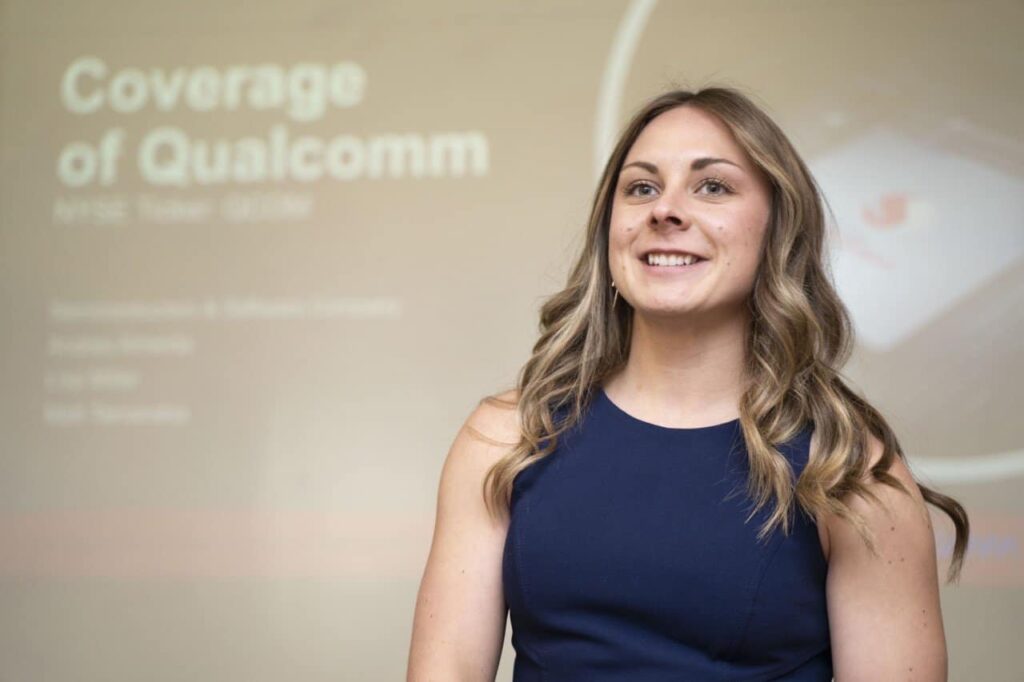
Western’s team spent the leadup week to the challenge crafting and perfecting their presentation, which they gave three times in succession as they advanced throughout the competition, ultimately triumphing over the University of Denver in the final showdown. Tamanaha notes that although there were some initial nerves, the presentation got easier over time. “I think we just felt more confident, and it just flowed. By [the end] it was just easy.”
After considering Ally Financial, Ford, and Antero Resources, the team selected Qualcomm as their growth stock, a technology firm that produces semiconductors (“chips”) and software critical for mobile communication networks. The company also owns a number of patents closely tied to 4G and 5G mobile networks.
Tamanaha adds that Qualcomm is in a unique position within the industry, generating much of its revenues and profits from licensing its technology and communications patents for use with 5G towers, and the chips required to connect devices to the towers.

“In times of recession, when sales are going to be low, they can still make money off the licensing,” Tamanaha says of the industry leader. Almeida adds that the firm pays out a high annual dividend (profit payout) to investors, around 1.7 percent, a sign of a healthy company. He explains that many competitor firms pay little to no dividend at all, opting instead to reinvest earnings into research and development.
The team’s pitch went deep into the financial metrics of the company, and their background analysis including examining cash-flows (and discounted cash flows, which account for inflation and present value), dividend yields, the beta (which showcases how stocks move in relation to the market and helps signify risk) and most importantly for Western’s team, the Price/Earnings-to-growth (PEG) ratio.
The PEG ratio examines the relationship between a stock price, its current annual earnings (profits), and the expected growth percentage of its earnings. Stocks with a PEG ratio under one are typically considered to be undervalued, and thus ripe for investment.

Tamanaha recalls that after their first presentation, a judge asked the team about the environmental, social, and governance (ESG) factors surrounding Qualcomm, which the team had not yet accounted for.
Under the guidance of Dr. Jennifer DeBoer, a Western professor who holds a doctorate degree in Sustainable Business Management and teaches strategic management, the team incorporated ESG principles into their next two presentations. Tamanaha added that ethical and governance factors played a substantial role throughout the competition. The team’s ability to adapt quickly was critical to notching first place.
Miller added that other schools participating in the challenge have access to the Bloomberg Terminal, a widely utilized business software that grants access to a wide range of centralized financial and trading information. Western does not pay for access to the Bloomberg Terminal, instead using Value Line, an independent financial research service.
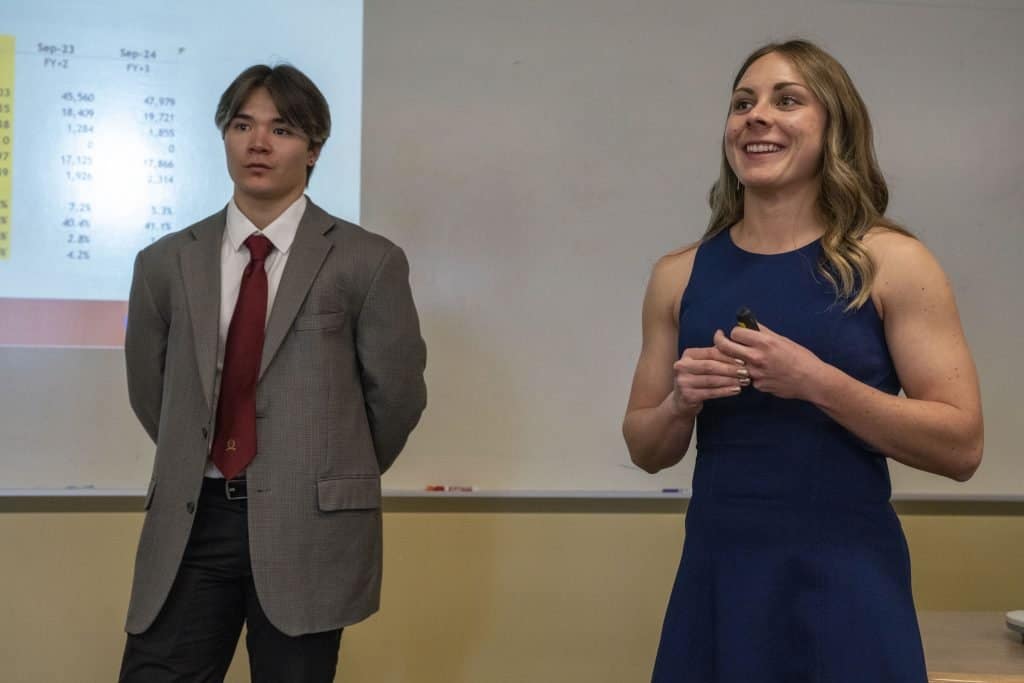
In their preparation, the trio utilized their Value Line subscription, in addition to other publicly available information gleaned from Yahoo Finance, Morningstar, Fidelity, and other financial analytics sources.
Western’s team was advised by Dr. James Harriss, who specializes in banking and finance. Almeida says that Professor Harriss’ mentorship, and the foundation he provides in financial coursework, is likely a key to Western’s continued success.
“Harriss doesn’t really credit himself enough…for these past few years he’s really given us one-on-one instruction. He’s been the one that’s developed us,” says Tamanaha, noting that Dr. Harriss has inspired a passion for finance in many of his students.
